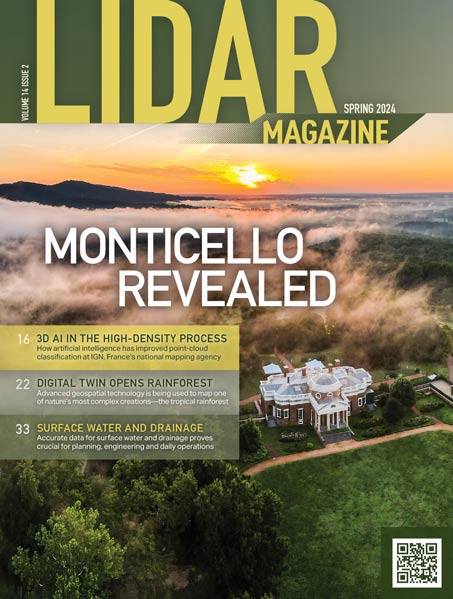St. Petersburg, Fla. – July 10, 2018 – Quantum Spatial, Inc. (QSI), the nation’s largest independent geospatial data firm, today announced it has conducted high-resolution LiDAR surveys of areas surrounding the Kilauea volcano eruption on the Island of Hawaii. This emergency response effort was part of the United States Geological Survey’s (USGS) Rapid Response Imagery Products (RRIP) in support of the Kilauea’s 2018 East Rift Zone – Remote Sensing Acquisition Requirement. The USGS Hawaiian Volcano Observatory (HVO), along with emergency responders, government agencies and academics, will use the data to better understand the conditions and characteristics of the Kilauea volcano, which has been continually erupting since May 3, 2018. Data also will assist planners in modeling potential lava flows, which may better predict and respond to future flows and enhance safety of residents.
The USGS National Geospatial Program (NGP) selected QSI to perform the first of two planned surveys over the active volcanic area. The QSI team, which included GEO1 and Windward Aviation, deployed within days to acquire high-resolution LiDAR at point densities averaging from 40 to 80 ppsm, with up to 150 ppsm in select areas and 100mp digital imagery using a Riegl dual VUX-1 LR sensor pod equipped with ABGPS/IMU mounted on a Hughes 500D helicopter.
Five distinct locations, covering an area of 57 square miles, were targeted: Kīlauea Summit Caldera, Pu’u O’o Crater and flow, Chain of Craters Road / Kaoe, Puna Geothermal Venture (PGV) and Western Leilani Estates lava field.
The project required 11 missions over the course of six days, operating, at times, as low as 500 feet above the ground and above active flows and nearby erupting calderas. With a need for a quick turn around, QSI deployed an analyst with the flight crew to post process each mission within hours of collection. The data was uploaded to the Geospatial Repository and Data Management System (GRiD) interface, developed by the U.S. Army Corps of Engineers (USACE), where additional data products have been developed and provided to the response team that includes FEMA, Hawaii’s Emergency Operations Center (EOC), and the Hawaii County Civil Defense.
After data collection, QSI measured topographic shifts during the processing by comparing new data with a 2011 LiDAR collection from the same area. Survey specialists and USGS experts confirmed within hours of processing QSI’s LiDAR data that areas within the site had shifted up to 1.5 meters east, 2 meters to the north and 1 meter in elevation. USGS scientists will continue to examine the new topographic data to better understand the nature of these shifts, and integrate it into lava flow models for more accurate predictive modeling.
“Airborne LiDAR and imagery remote sensing surveys are invaluable tools for understanding the effects of active volcanic eruptions, which change the topography as fissures emerge and lava flows extend to the ocean,” said Michael Shillenn, vice president at QSI. “We were honored to work with the USGS and others on this critical project. We believe that data and analysis provided by the QSI team will provide insights into future scenarios, enabling emergency responders to protect the surrounding community.”
About Quantum Spatial, Inc.
Quantum Spatial, Inc., (QSI) the nation’s largest independent geospatial data firm, provides geographic insights to the largest government and corporate organizations that need geospatial intelligence to mitigate risk, plan for growth, better manage resources and advance scientific understanding. A pioneer in advanced mapping technology, QSI’s end-to-end solutions and services deliver the industry’s highest data quality and accuracy, while leveraging the widest array of technologies for analyzing all types of terrains. Customers use the company’s acquisition, processing, analytics and visualization solutions in a range of technical and scientific disciplines – from geology and biology, to hydrology, forestry and civil engineering. Utilities, oil and gas producers, engineering and construction firms, as well as the military and major government agencies, are QSI customers. QSI has multiple offices around the country. For more information visit quantumspatial.com, join us on LinkedIn or follow us on Twitter @QuantumSpatial.
